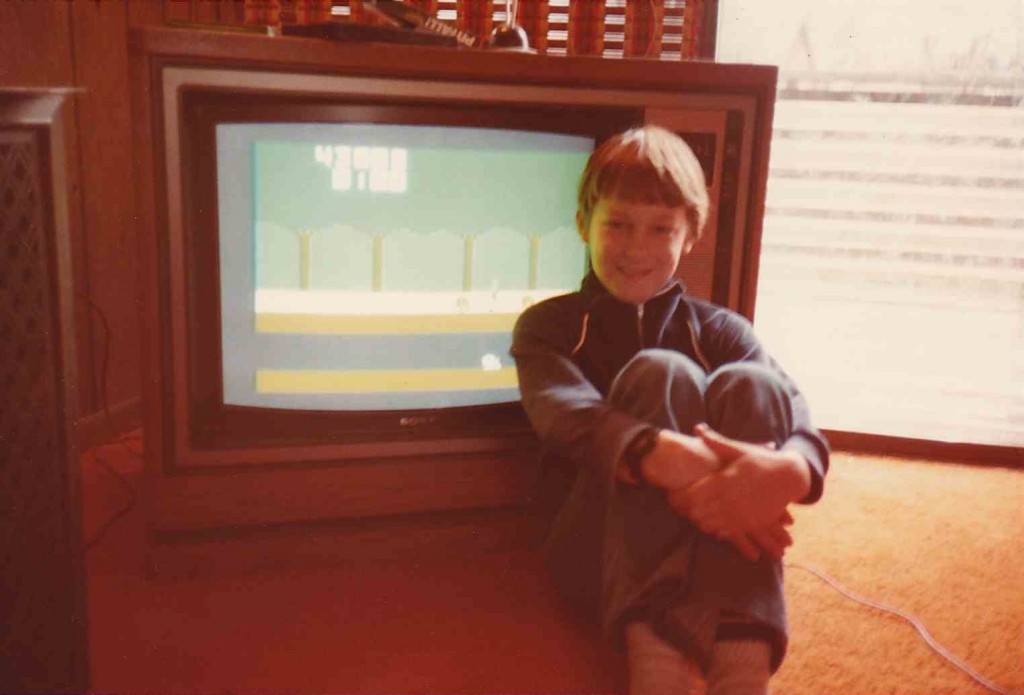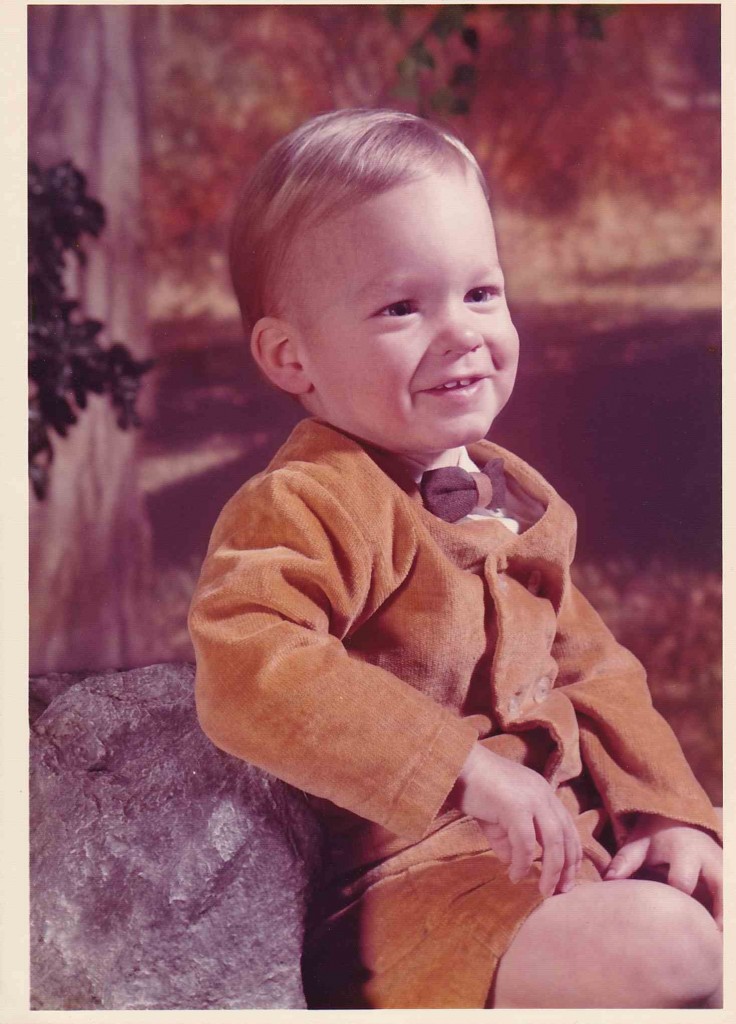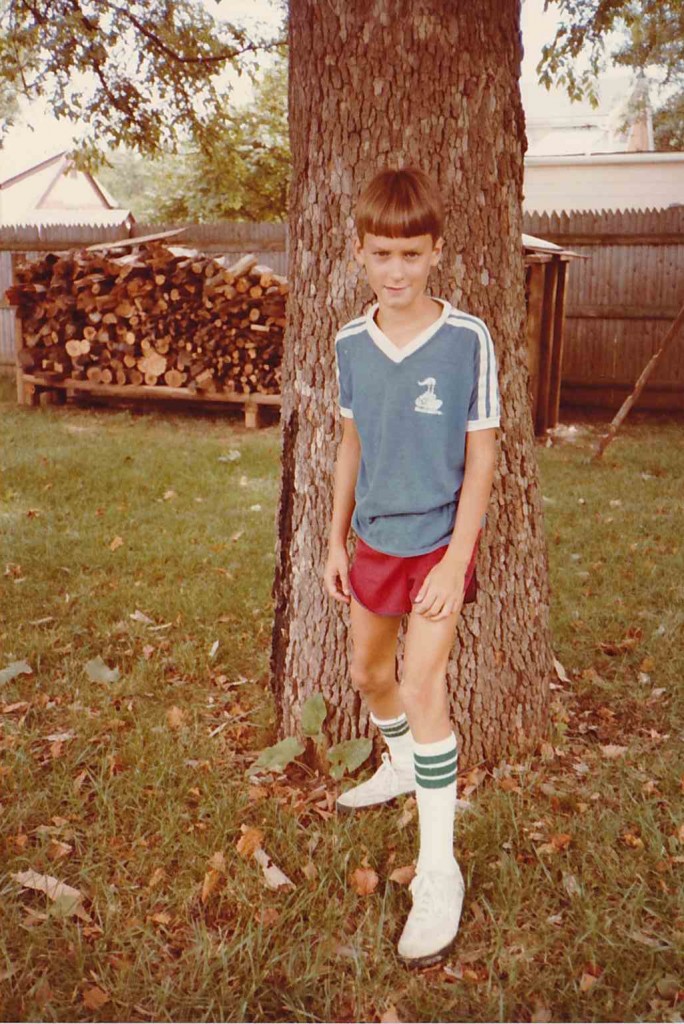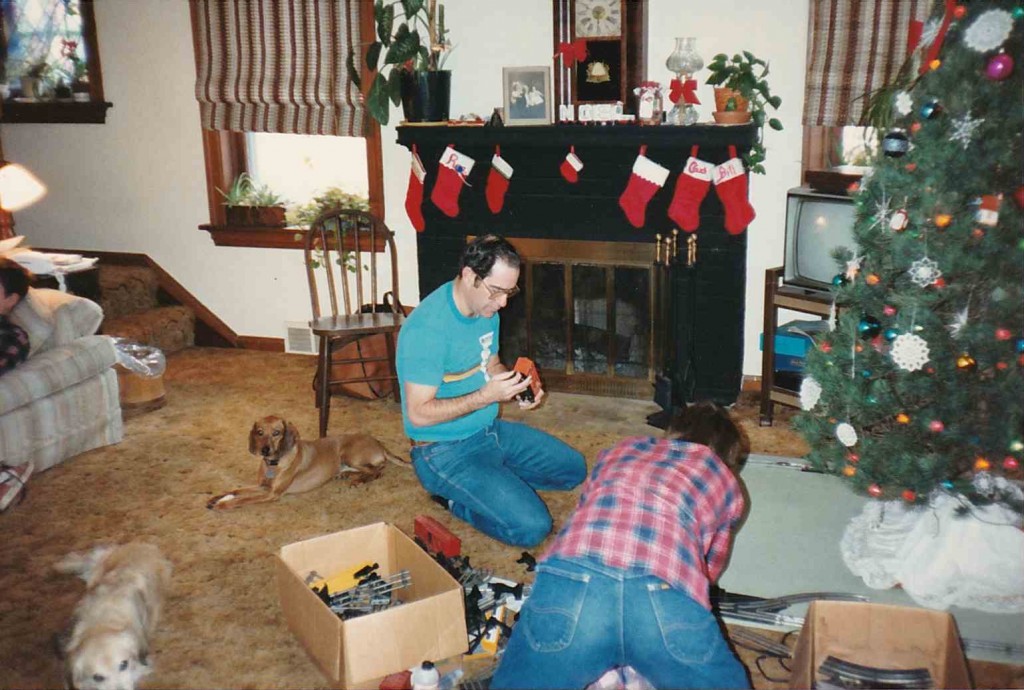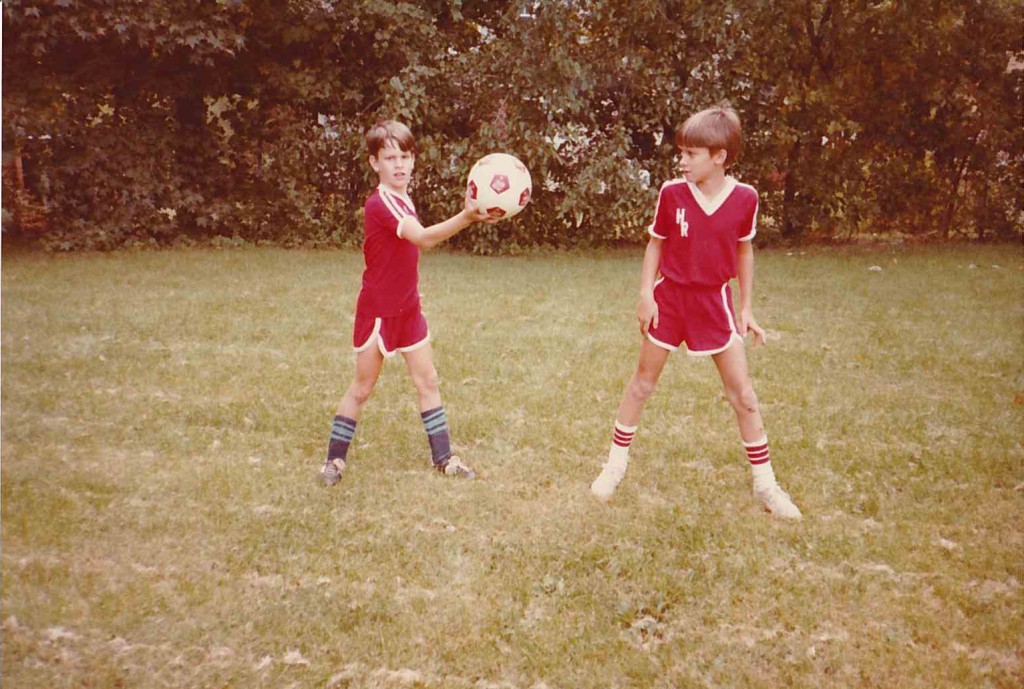
Category: Family
Intellivision/Pitfall 1983 (#TBT)
Will’s Room Move (Finished)
Susanna is fighting a cold today, so we didn’t make it as far as I had hoped (i.e. I didn’t get the bookshelves built). But we made the top goal for the day – we moved Will into his new room. He loves it, and it is a much better fit than his previous room. Hopefully we can make his previous room a good fit for us…
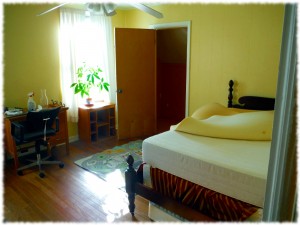
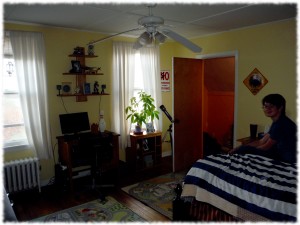
Baby Picture 1974 (#TBT)
Picking Pumpkins (and Apples)
Yesterday morning we visited Holmberg Orchards in Gales Ferry to pick apples for the week and pick up some fall decorations (pumpkins). It was a beautiful day and the orchard was crowded, but well worth the trip.
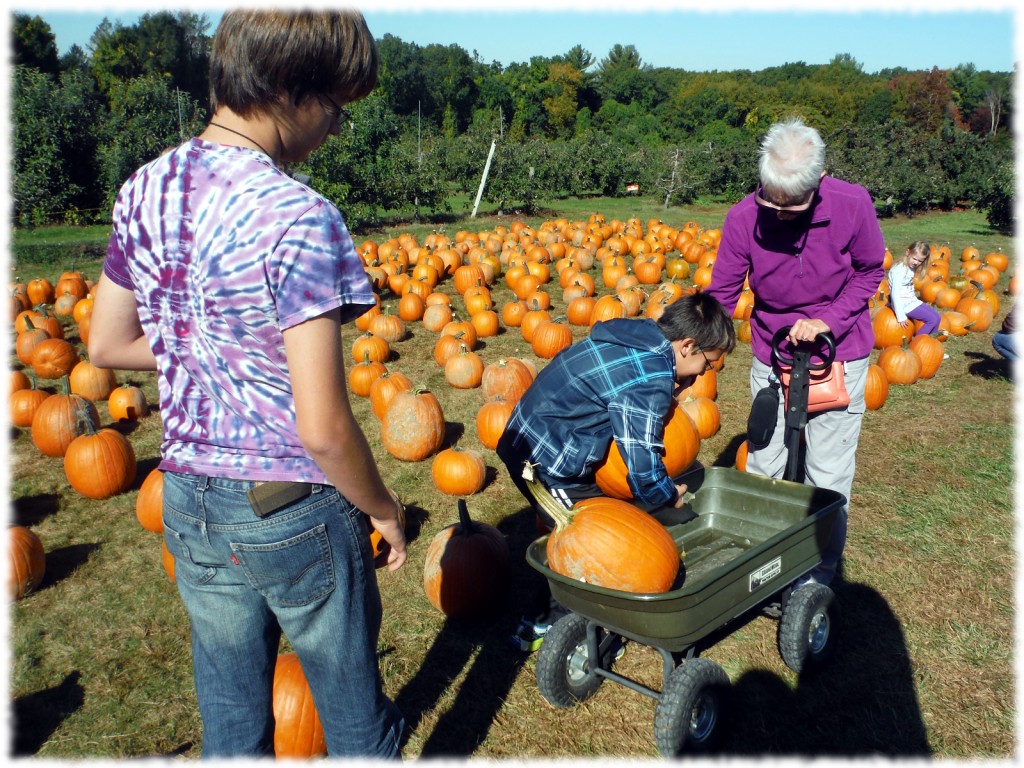
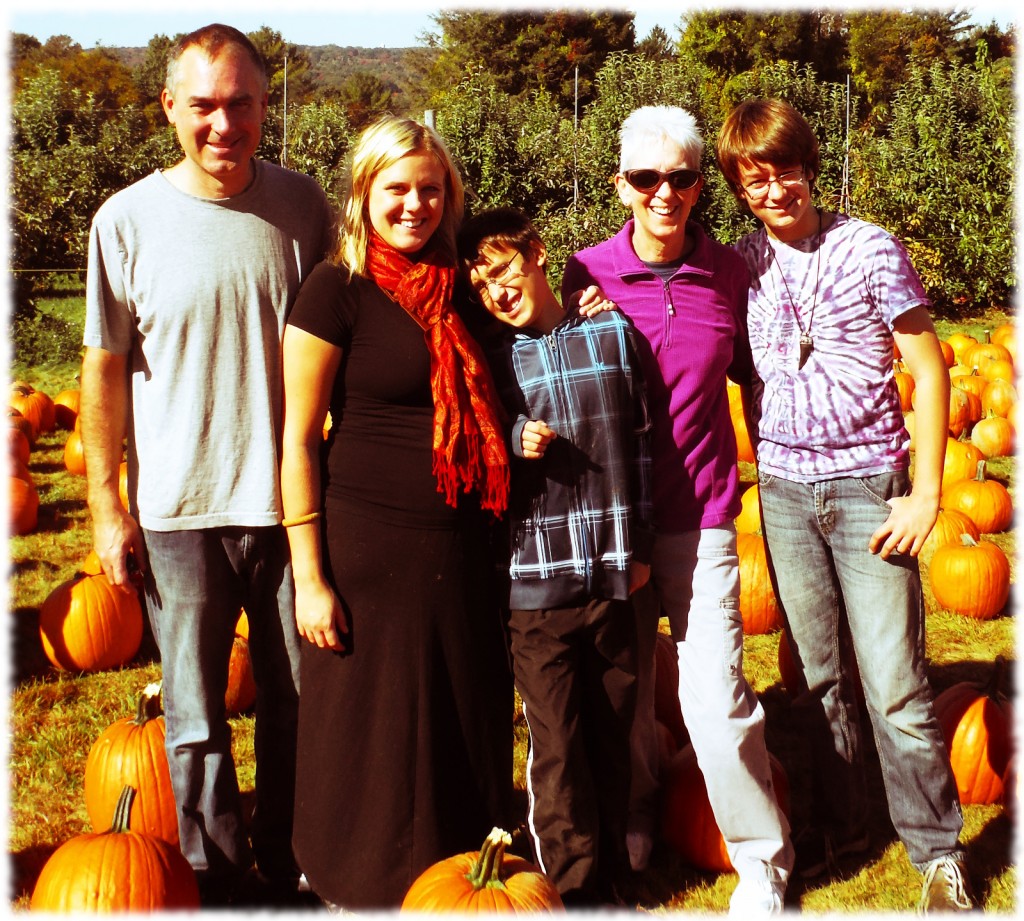
Apples, Apples and Woodcarving
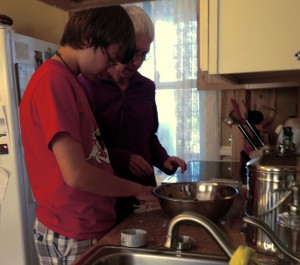
We had a busy Saturday. Busy enough we had to split up into two groups.
My mom is visiting for the weekend – a nice way to start off the fall. She arrived on Thursday, and I took Friday off of work. We visited B.F. Clyde’s Cider Mill in North Stonington on Friday while the boys were at school and Susanna at work. It was interesting enough that she and Susanna decided to take Will back on Saturday while I was out with Ben.
Of course, the mill was empty on Friday, but the lines were out the door on Saturday. But they only press cider on weekends, so Will, Susanna and my mom got to see it in operation even if they couldn’t get into the store with the crowds.
That afternoon, Will decided he wanted to make apple crisp – his favorite dessert right now. My mom found a recipe and helped him make the apple crisp. It was even better than the apple crisp we had bought at the local orchard last month. I’m pretty sure Will will be making another batch (or two) now that he knows what to do (considering he ate half of the apple crisp last night after dinner).
Ben and I headed east for a different sort of adventure. I had signed him up for a woodcarving class for his birthday. It was an introduction to woodcarving at the Rhode Island Woodcarving Retreat (hosted by the Mystic Carvers).
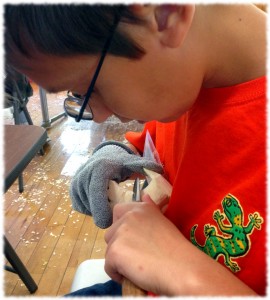
It was an amazing experience. We arrived at 8AM and carved until after 3pm (with a few breaks). Ben didn’t get bored or frustrated, he just kept working. Even when I was getting tired, he kept going.
The group of novice carvers worked on a carving of a dog using a carving knife. It was a good pace for a start, and the project was complicated enough to challenge us without being too complicated to complete. Of course Ben was one of two people at the whole retreat under the age of 40, and I think the group thought it was nice to see someone young interested in the craft. And everyone was impressed that he was able to concentrate for over 6 hours on carving. I’m impressed that I was able to do the same (I wasn’t surprised about Ben – he has always been good at those types of projects – me not so much).
He was invited my many members of the Mystic Carving club to join the club. The club meets once a month and offers novice carving lessons at each club meeting. We will probably go to the next meeting (in two weeks) and see if Ben likes it. He loved the class, so I’m thinking we will have fun at the club.
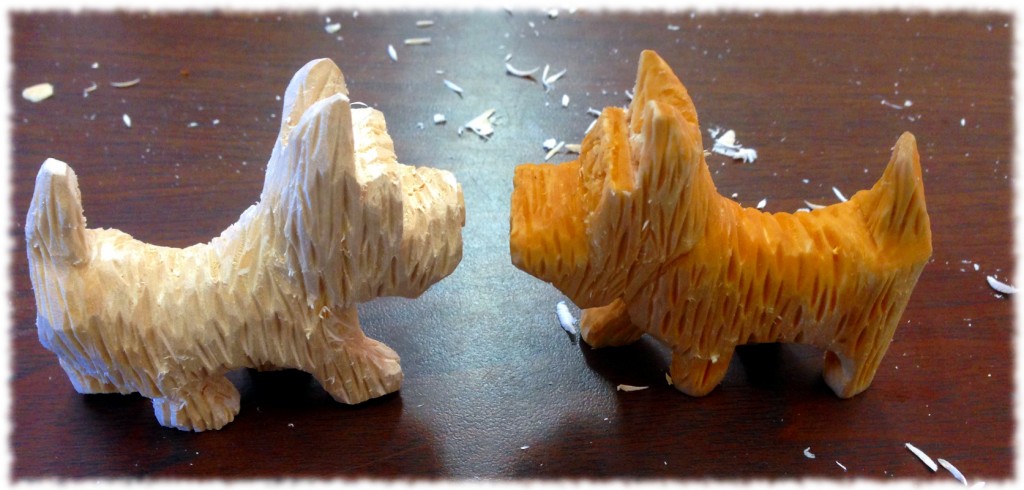
I guess now Ben needs to get some carving knives. Luckily it is a hobby that doesn’t need a lot of tools/equipment to get started. Now I need to spend a day to let my right hand/arm rest from all the work yesterday.
Soccer Outfit 1982 (#TBT)
Christmas with Uncle Tom – 1984 (#TBT)
Weekend Pictures
This weekend was pretty busy. On Saturday we had Ben’s birthday party at a local park (Sawmill Park). It was a perfect location for a game of capture the flag. And with only 6 kids at the party, there was a lot of running. Even without a large turnout I think it was one of the better birthday parties that we have thrown.

The weather this weekend was perfect, not too hot and a nice breeze.
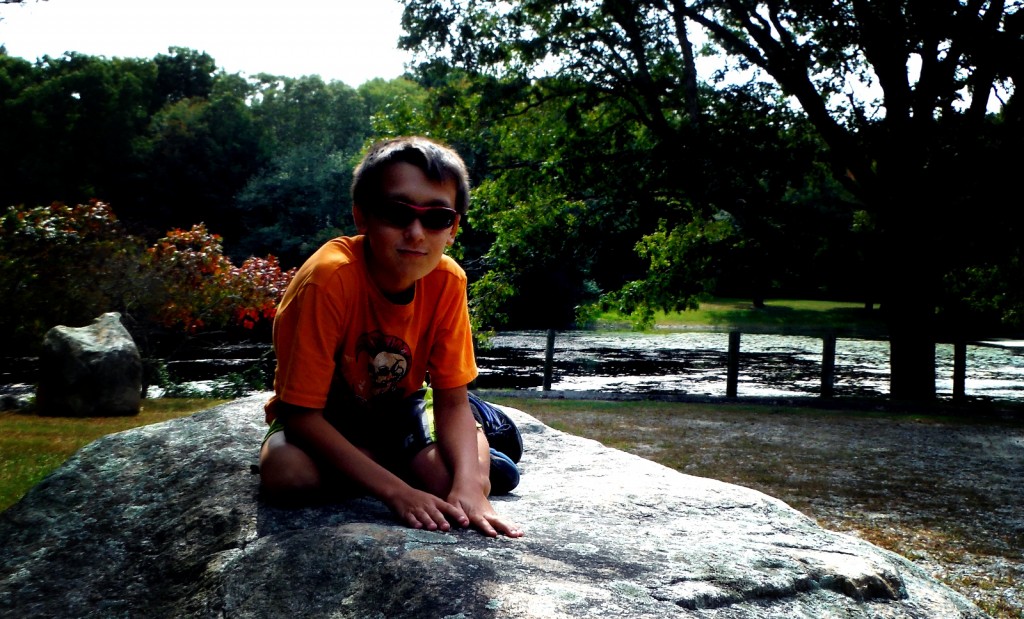
On Sunday, Susanna took Ben to the Drunken Pallet in New London for an afternoon of paining. Will and I took the afternoon to motor/sail the boat from the mooring on the Niantic River to the boat launch on the Thames River.
The weather was perfect for sailing with a good breeze on Long Island Sound and the tides were with us. The trip took about 4 hours, plus time to retrieve the boat and unstep the mast. We didn’t get much sailing done this year. With a new family member next summer and lots of family visiting we won’t put the boat in the water next season. If things work out we will sell the boat and in a couple of years look for a bigger one. I think having the boat in the water every summer is a bit much right now – I have too many things I like doing in addition to time on the water. Anyway, Ben has a power boat that we need to finish up and try to get in the water one of these summers.
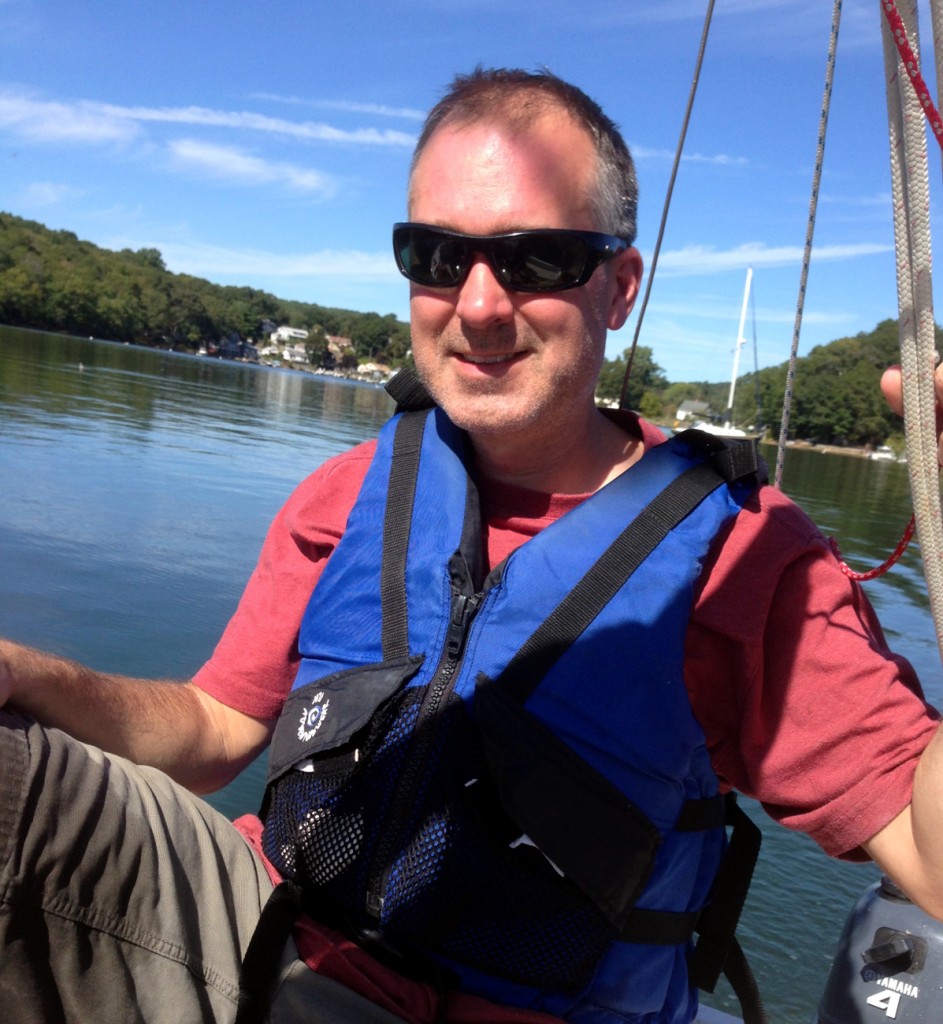
…And It’s a Girl

Today we got good news. The baby is looking good and the ultrasound went very well. We could also tell that the baby is no longer an “it” and is now a “she.”
We expect that in mid-February we should have a new member in the family, Isabella Louise Curtis. Will and Ben will get a new baby sister and the dogs will gain a new human to pull ears, tails, and other private body parts. Of course, ultrasounds aren’t 100%, so if “she is a he” (as Ben would say when he was little) then we’ll have to start the name game again.
Overall it has been a busy month and I haven’t found time to write in over a month. The past 5 weeks spanned a trip to Sweden for Sofia’s wedding, the boys returning to school, Susanna returning to work part-time, and a trip to Hawaii (yes, work is tough.) Hopefully as things calm down this fall I can catch up on posts and add pictures from the trips.

